If you wander the quaint streets of Delft today, the echoes of Johannes Vermeer’s transformative genius are palpable, resonating through the canals and cobblestones of this historic Dutch town. Born and raised here, Vermeer emerged from humble beginnings to etch an indelible mark on the annals of art history.
His life was mired in mystery, his artworks sparse yet significant. This exploration delves into the enigma of Vermeer- charting his life, artistic technique, and style, presenting his iconic works, and finally exploring his enduring legacy. His work, an aesthetic anthology of the ordinary, speaks a universal language, transcending the boundaries of time, geography, and culture.
Table of Contents
- Life and Background of Johannes Vermeer
- Technique and Artistic Style of Vermeer
- Notable Works and Interpretations
- Legacy and Impact
- Related Questions
Life and Background of Johannes Vermeer
Johannes Vermeer: The Master of Light and Beauty
Johannes Vermeer, the mastermind behind the captivating painting “Girl with a Pearl Earring,” was an artist of detail, subtlety, and light. He was born in 1632 in the town of Delft in the Netherlands. He remained there throughout his days, crafting stunning displays of domestic life imbued with light-infused atmospheres and meticulously detailed textures.

Raised in an inn owner’s family, Vermeer’s artistic journey was initially influenced by his early life environment. In the 17th century, Delft was one of the chief centers of art in Holland, swarming with artists and immense artistic diversity. Interestingly, there is no confirmed knowledge about Vermeer’s formal training in art.
Some art historians speculate that Vermeer apprenticed with local artists, such as Leonard Bramer or Carel Fabritius, thus acquiring the deception for his multifaceted genius.
Vermeer’s art displays an incredible elevation from the common to the sublime. His works depict ordinary scenes of daily life, yet they are elevated into a plane of extraordinary beauty. How is this accomplished? Much is down to Vermeer’s extensive use of light.
His mastery of employing and understanding light added depth and dimension to his subjects. Scenes every day in Dutch genre painting under his brushstroke became dramatic and balletic, imbued with delicate suggestiveness.
Vermeer’s artistic style was very much an effect of his background. He grew up in the Golden Age of Dutch art, a period distinguished by the genre called genre painting. Vermeer refined this style, pushing boundaries and strongly favoring domestic interior scenes. A sense of tranquility and calm envelops his paintings, setting them apart from his contemporaries.
The economic backdrop of Vermeer’s life profoundly influenced his work. Upon his father’s death, Vermeer inherited his art dealing business, which exposed him to various artistic styles and greatly expanded his understanding of art. Yet, while art dealing provided much-needed income, it led to an artistic dilemma.
His meticulous attention to detail and perfection meant slower production of art pieces. This frugality of output and the Dutch economy’s downturn during the Franco-Dutch War eventually led to financial difficulties for Vermeer.
Financial constraints could be why Vermeer’s oeuvre consisted merely of around 35 paintings. His artworks were not widely recognized during his time, partly due to their limited number and the private nature of their ownership, but that situation has since drastically changed.
Today, Vermeer is celebrated universally for his resourceful composition, innovative use of light, and enigmatic, calm figures that continue to mesmerize art lovers around the globe.
The beauty of Vermeer’s art lies in its allure of simplicity. His paintings seem like frozen moments in time, simple yet spectacular. Their immersive quality pulls viewers into Vermeer’s world, where the silence is eloquent, and the mundane is magical.
Through his art, Johannes Vermeer exudes a love for life’s quieter moments, portraying them with unparalleled insight and an insightful eye, shedding light on the unobserved and underscoring the dignity and beauty of everyday life in its most intimate form.
Indeed, the artist’s trajectory profoundly shaped Vermeer’s vision and voice in art. As an artist whose observations of light, space, and human interactions have rendered him one of the most outstanding figures in the art world, the unmistakable influence of his life circumstances on his work is a testament to the deep inseparability of art from the artist’s lived experience.
He remains a vibrant figure in art history whose legacy continues to enlighten and inspire, reminding us that the ordinary can reveal extraordinary beauty when perceived with significance.
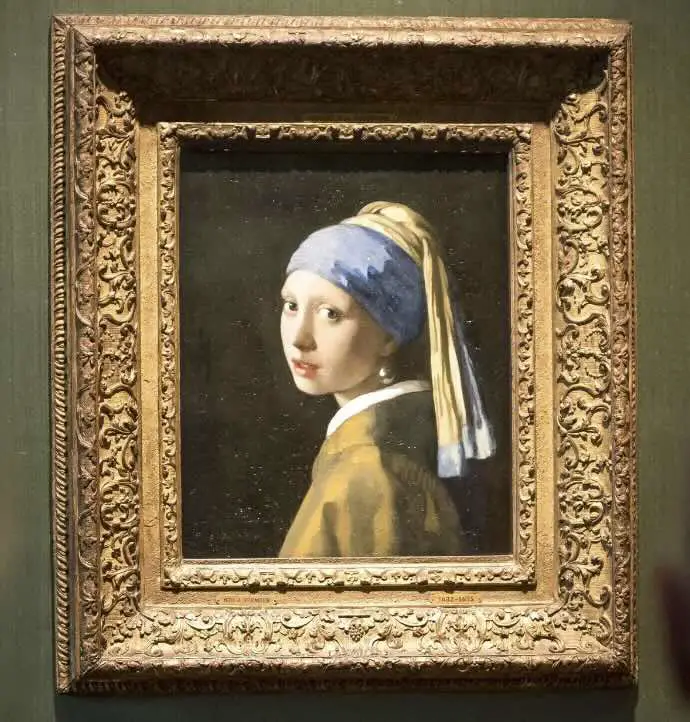
(Lex Van Lieshout/Agence France-Presse, via Anp/Afp Via Getty Images)
Technique and Artistic Style of Vermeer
Distinctive Aspects of Vermeer’s Artistic Style: Beyond the Ordinary into the Extraordinary
Approaching the work of 17th-century Dutch Master Johannes Vermeer, what strikes both curious observers and dedicated art enthusiasts alike is the unique stylistic elements that characterize his iconic body of work.
Indeed, much of his distinctiveness arises from his masterful use of light, his fondness for interior scenes, and the profound simplicity of his compositions, which have already been meticulously noted. Yet, these aspects are not exclusive to Vermeer alone but were integral to his contemporaries’ and predecessors’ lexicons, so what precisely sets Vermeer apart?
The answer lies in two converging domains of his oeuvre – his consummate understanding of the science of optics and his entanglement with intimacy and solitude.
Among Vermeer’s contemporaries, the study and usage of optics – especially in depicting accurate reflections, refractions, and perspective – was relatively common. Yet Vermeer pushed the envelope further.
He was known for his innovative use of the camera obscura, effectively projecting a scene onto a surface through a small hole. This technological implement allowed Vermeer to observe and mimic intricate lighting nuances—invisible to the naked eye—within his works.
This uncanny precision and reality imbued with an ethereal, diffused quality of light, creating a riveting dichotomy; this clever manifestation of realism versus illusion is what earmarks Vermeer’s mastery.
However, it was not just the camera obscura or light but how he married them to his preoccupation with scenes of interiority and solitude. Vermeer’s glaring fascination with silence and solitude is palpable in many of his works, such as “The Lacemaker” or “Woman Reading a Letter.”
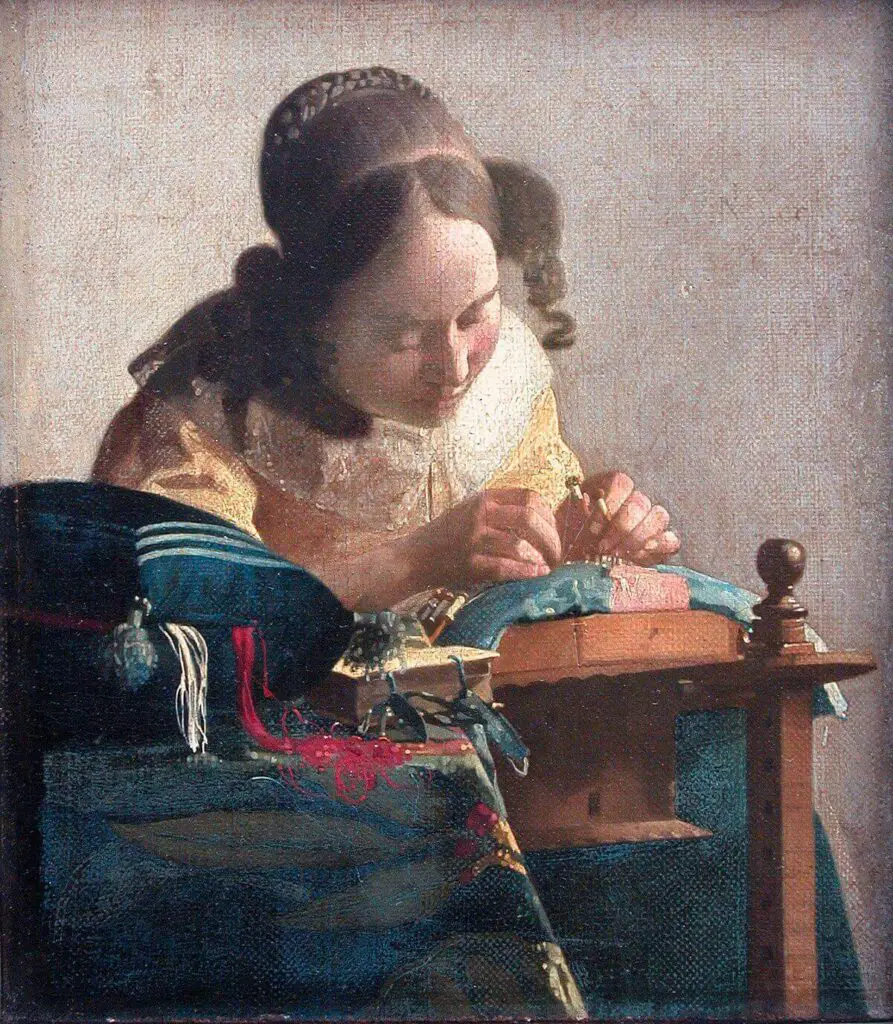
Unlike his contemporaries, who often populated their canvases with multiple characters and dynamic interactions, Vermeer opted for scenes encapsulating one or two figures, often engulfed in a tranquil, reflective moment.
This stillness within his work, coupled with the ethereal sheen the optics provided, endowed a certain mysterious allure and intimacy to everyday life, making the mundane extraordinary. This elevation of the everyday act into an occasion of quiet revelation – a ‘private epiphany’ – is a significant Vermeer hallmark.
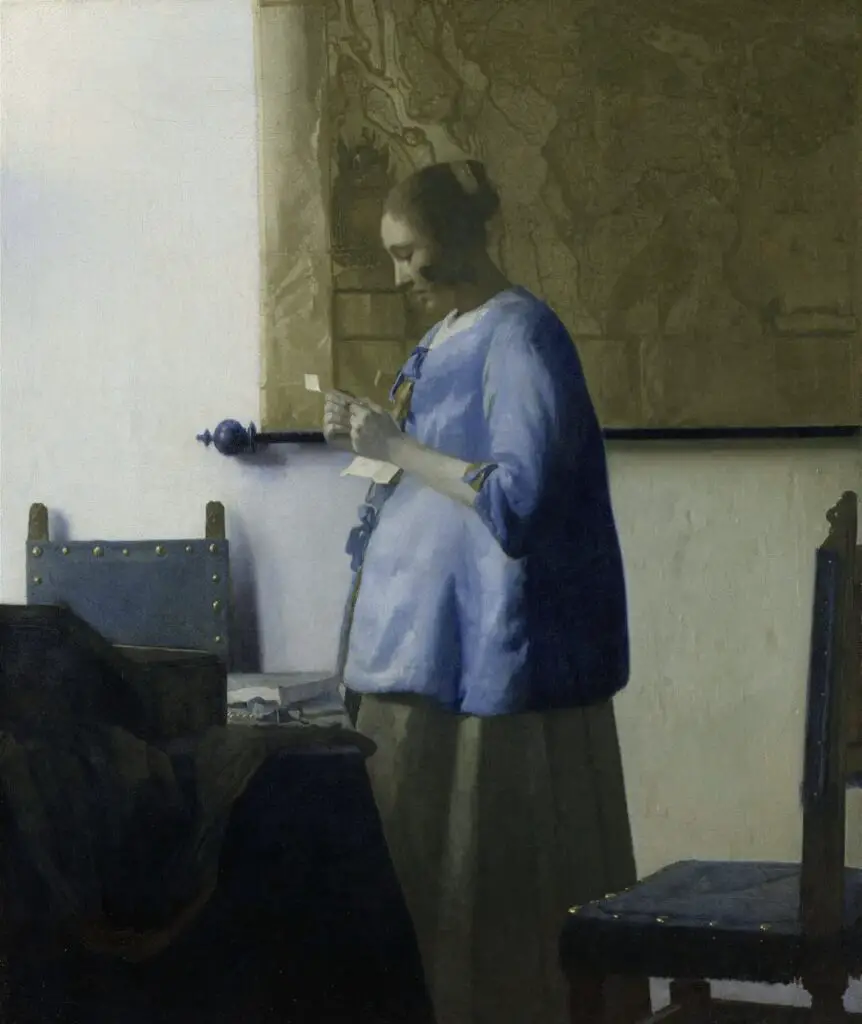
Lastly, Vermeer’s complete absorption in color and texture deserves mention. He had absolute command over color and its myriad rendering on canvas, especially evident in his brilliant manipulation of the notoriously tricky lapis lazuli employed to create the spectral blues in his works. His notable control over texture, whether the soft folds of a satin gown or the iridescent sheen of a pearl earring, had a level of virtuosity few could emulate.
In summary, it is this potent concoction of scientific understanding of optics, the intimate portrayal of individual solitude, and his mighty dominion over color and texture that allows Vermeer’s works to rise above the quotidian scenes they depict, turning viewers into privileged witnesses of an alchemic transformation of every day into the timeless.
Notable Works and Interpretations
Art enthusiasts and historians regard Johannes Vermeer’s work as the epitome of beauty and technique in the 17th-century Dutch Golden Age painting genre, beyond the artist’s personal life and choices.
Among his limited repertoire of just over 30 confirmed paintings, certain pieces stand out in their exceptionality and display of Vermeer’s signature style and techniques.
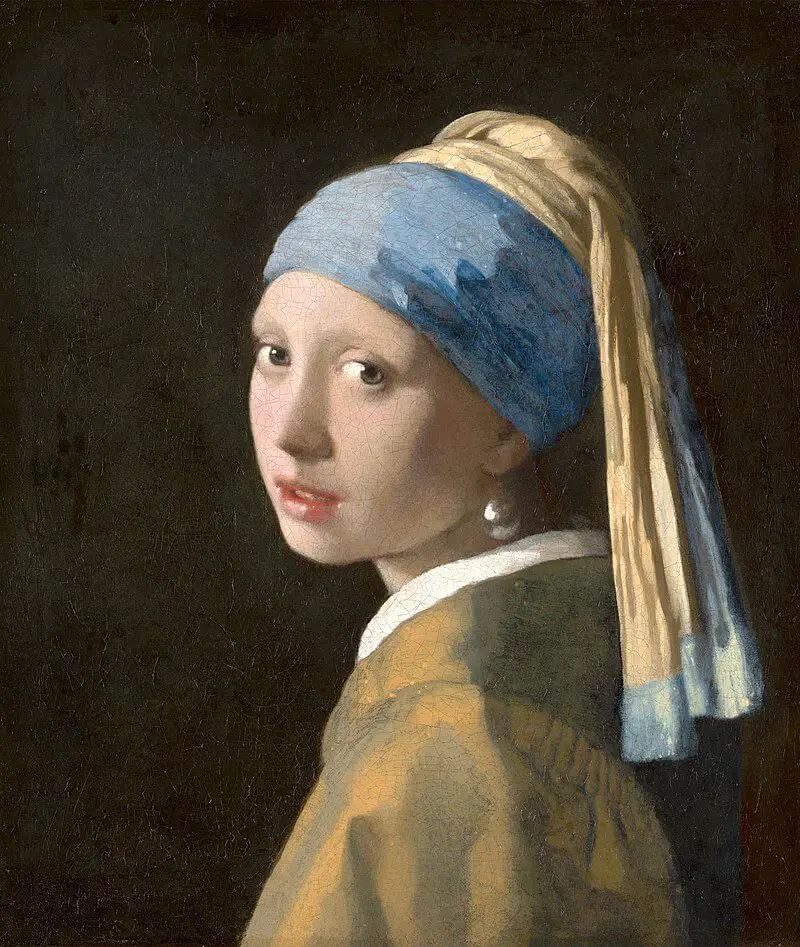
“The Girl with a Pearl Earring,” arguably one of Vermeer’s most recognizable pieces, transcends the realm of genre paintings with a near-universal appeal. A departure from Vermeer’s favored domestic scenes, this intriguing portrait mesmerizes with its vivid and subtle play on light and shadow around the tantalizing earring worn by the serene young girl.
A unique feature of this masterpiece—a recurring motif in other works—is Vermeer’s masterful use of blue, produced using the semi-precious stone lapis lazuli. This exotic pigment adds a rich depth to the narrative, underscoring Vermeer’s fascination with color and texture.
Vermeer’s “The Milkmaid” is another painting demonstrating his adoration for daily domestic activities. Vermeer’s splendid use of color imbues the scene with an almost ethereal quality, transforming the menial task of milk pouring into an act of dignified beauty.
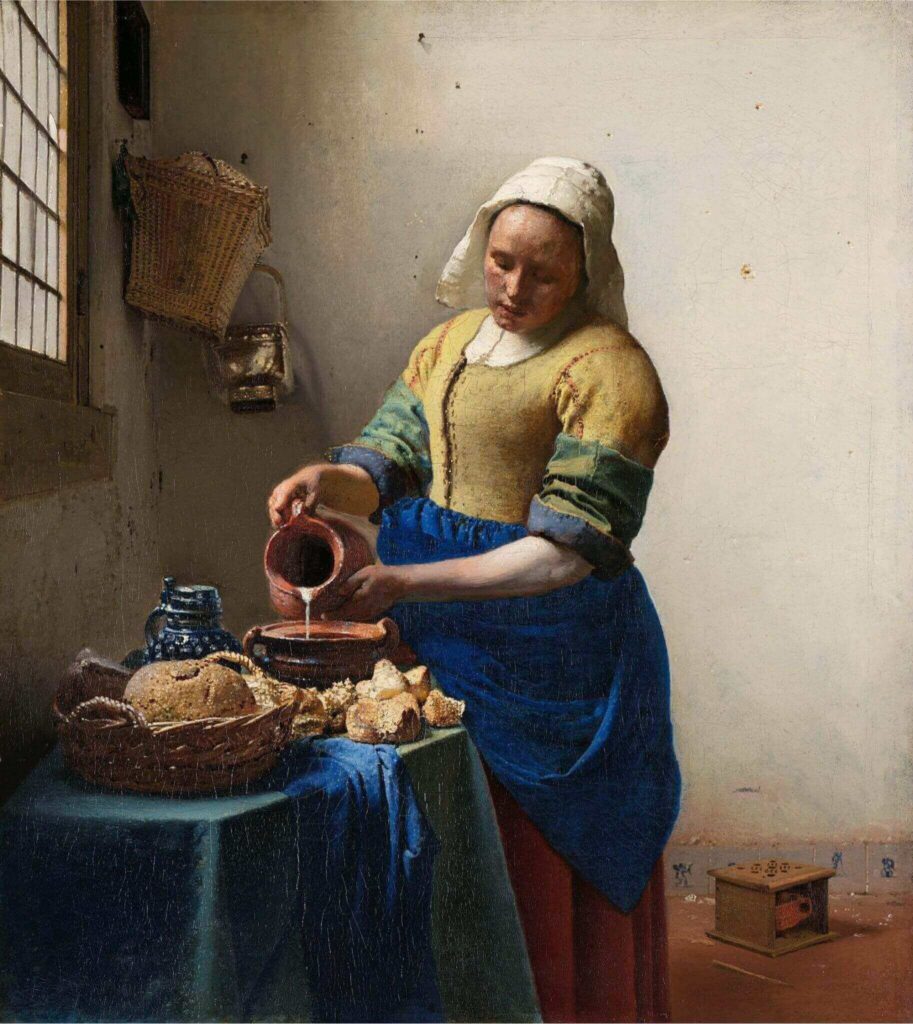
His astute mindfulness of composition and detail is also evident in “View of Delft,” where his precise brushstrokes depict an impressive panorama of his hometown. Vermeer’s use of the camera obscura—a precursor to modern photography—is believed to have significantly contributed to the execution of this painting.
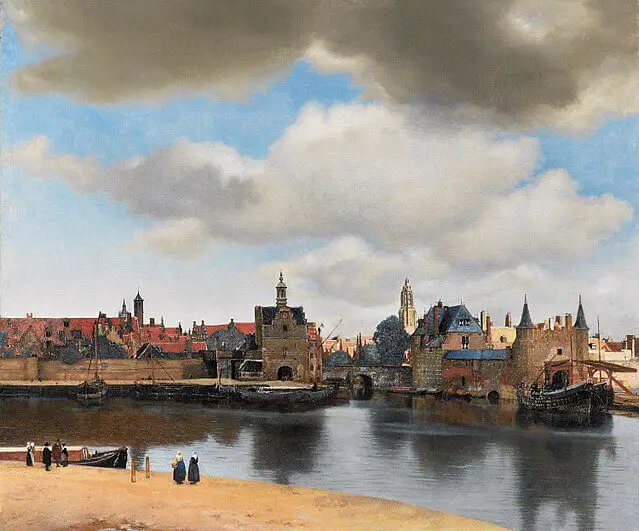
The rich tonal gradations, sharp architectural details, and resonant light effects echo Vermeer’s repeated thematic exploration of quiet and solitude.
“The Astronomer” and “The Geographer” garner attention for Vermeer’s use of maps and celestial globes, implying a burgeoning interest in science and exploration. The figures’ expressive stillness conveys the activeness of the mind, moving beyond the tangible to the narrative realm.
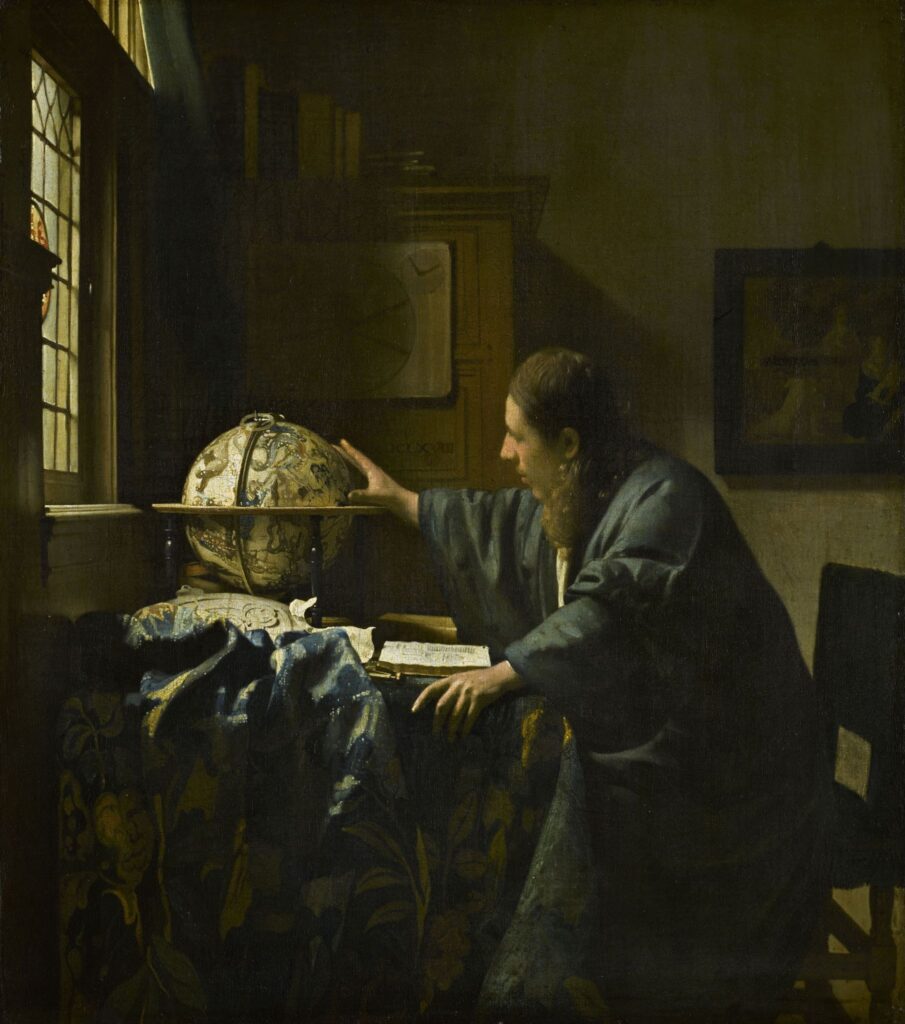
These paintings reflect Vermeer’s enduring fascination with human introspection and curiosity—an intricate dance of shadow and light translating into a profound study of human endeavor and inwardness.
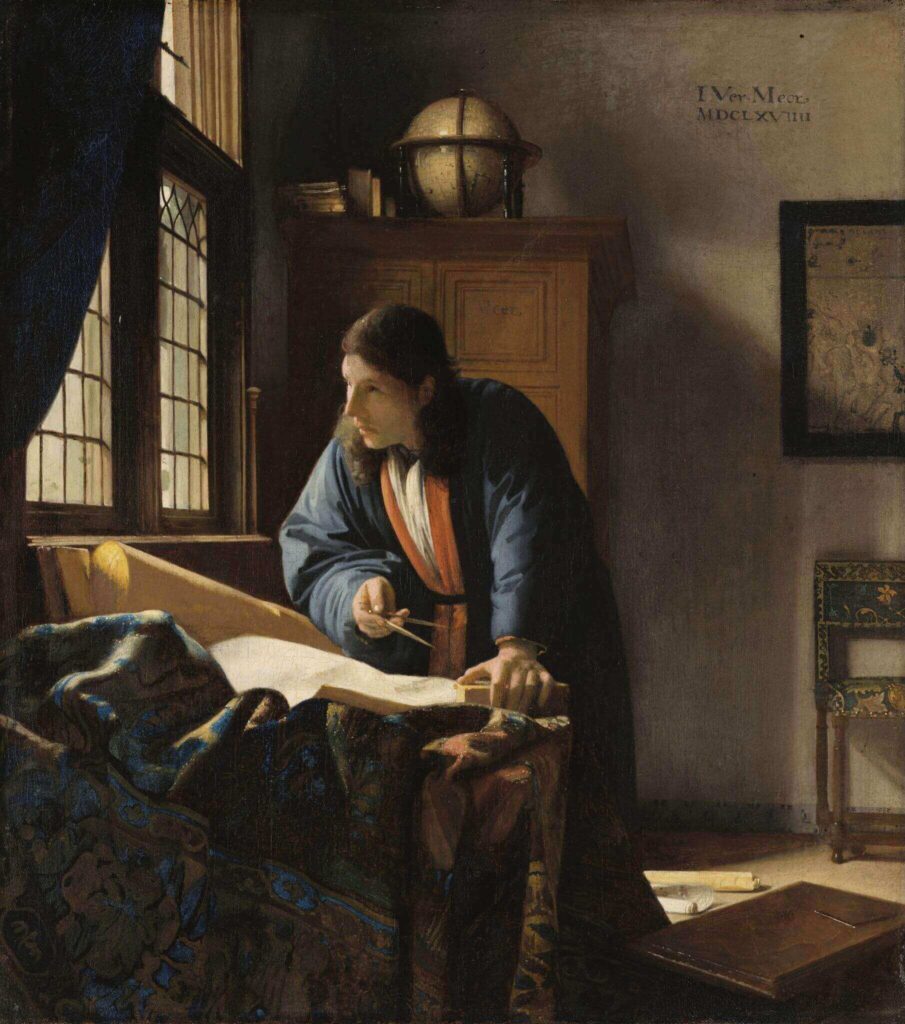
Lastly, the poignant narrative in “The Woman Holding a Balance” encapsulates Vermeer’s transcendent artistry. Serene light filters into the room, highlighting the woman and the balance, prompting thoughtful contemplation about life’s delicate scales—profoundly illustrating Vermeer’s ability to elevate the mundane.
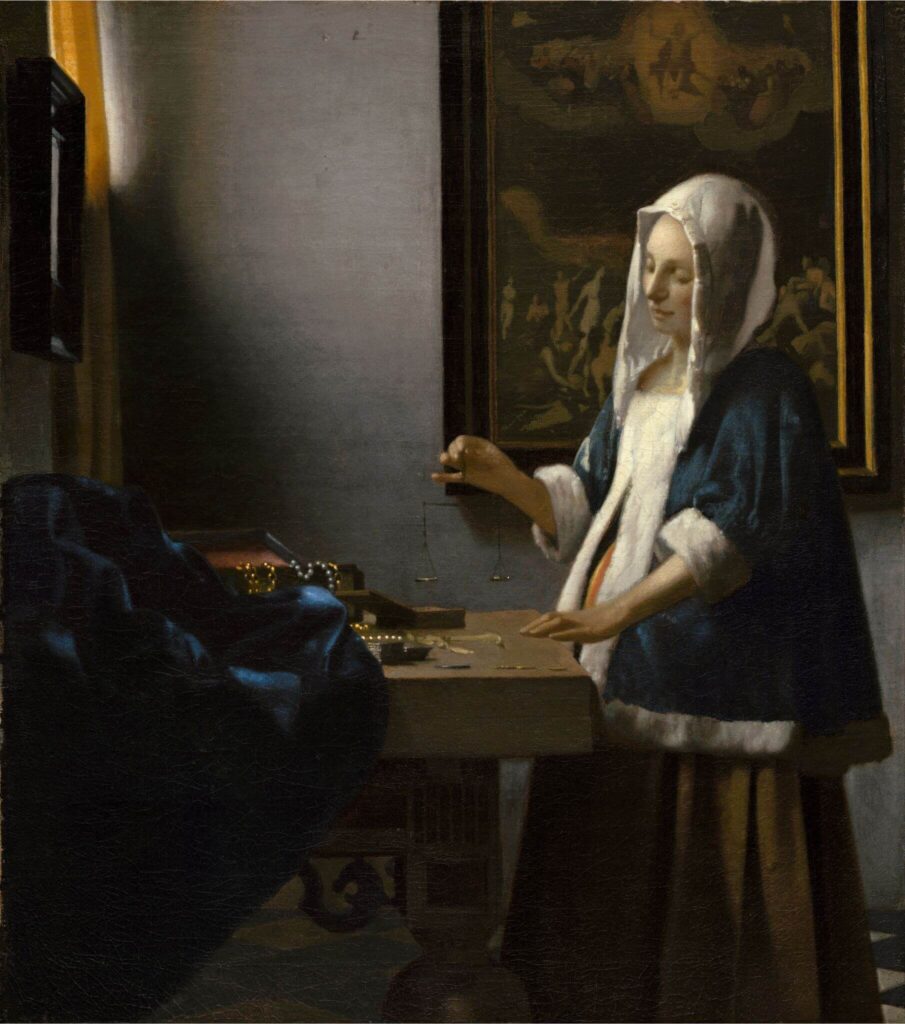
Each piece complements and interlocks with the others to form an intimate, authentic, and captivating exploration of the everyday. Johannes Vermeer’s work springs from a deep-rooted understanding of the human condition and, though shrouded in mystery, offers a distinctly accessible landing point for the art connoisseur and the average viewer alike.
As one of the most pre-eminent artists of the Dutch Golden Age, his legacy is an enduring tribute to those quiet moments and the beauty that resides within them.
Legacy and Impact
To fully comprehend the influence of Johannes Vermeer’s art on the canon of art history, one must look beyond the works themselves and delve into the subsequent eras and artists he has inspired.
Despite the scarcity of his output over his lifetime, Vermeer’s exceptional mastery over elements of light, detail, and composition has remained a touchstone for countless artists that followed, fostering a profound and enduring impact on the trajectory of Western art.
Beyond his contemporaries in the Dutch Golden Age, Vermeer’s impact resonates through subsequent eras. With his keen observance of life’s mundane details and his remarkable aptitude for transforming simple, everyday scenes into luminous instances of beauty, Vermeer laid the groundwork for the aesthetics of later genres.
Impressionists such as Pierre-Auguste Renoir and Claude Monet, for instance, owe a significant debt to Vermeer’s prominent use of light and texture in creating visual narrative.
The enveloping tranquility and solitude in Vermeer’s interior scenes also played a crucial role in influencing the subjects and styles of the Romantic and Realist periods. Vermeer’s penchant for capturing quiet introspection, not only in subject matter but in atmosphere, can be traced to the works of artists like Gustave Courbet and Caspar David Friedrich.
They echoed his use of light, the treatment of detail, and nuanced mood settings in their endeavors to chronicle the human experience.
Parallels can also be drawn between Vermeer’s style and the art of the 20th century—a period marked by breaking free from past conventions and continuously exploring new modes of expression.
Edward Hopper’s lonely, introspective scenes of urban life hint at a kinship with the quiet, domestic tableaus of Vermeer, as does the softened color palette and candid compositions of Belgian surrealist René Magritte.
Moreover, Vermeer’s profound influence is not only limited to traditional painting. The technological advances of the 20th and 21st centuries saw the rise of new media and art forms. Filmmaking, for instance, has seen the impact of Vermeer’s mastery of light and composition.
Legendary filmmakers such as Akira Kurosawa and Stanley Kubrick have cited Vermeer’s meticulous arrangements and treatment of light as primary influences in their storyboard compositions and cinematography.
In academia, too, Vermeer’s contributions are heralded as foundational. Art theorists, historians, and scholars continuously return to his oeuvre, analyzing the layers of interpretation concealed within his intricate compositions.
His nuanced exploration of domesticity, sensitive approach to female subjects, and sophisticated interplay of light, color, and texture serve as rich wells of discourse and scholarship.
In conclusion, the influence of Vermeer’s art on the canon of art history is beyond measure. While the quantity of his work may be limited, the depth, beauty, and technical mastery contained within his paintings have fashioned a seismic impact on the art path.
His legacy serves as a living testament to the power and endurance of artistic expression—an ever-guiding star for posterity in its ceaseless journey into the realms of beauty and creativity.

Vermeer has persistently held us captive through the ages under his aesthetic spell. His ability to unravel the profound in the mundane and highlight the prosaic poetry demonstrates a transcendental artistry.
His captivating use of light and the precision of his technique continue to enlighten artists and enthusiasts. The timeless allure of ‘The Girl With a Pearl Earring’ and ‘The Milkmaid’ (among other noted paintings) is a testament to this.
Diffused through exhibitions and reinterpretations, the essence of Vermeer lives on, underscoring the artist’s relevance in a world far removed from the 17th-century Dutch Golden Age he belonged to.
Vermeer’s impact reverberates in the art world and the collective consciousness, reminding us to pause and marvel at the inherent beauty that surrounds us if only we truly take the time to observe.
Anita Louise Art is dedicated to art education, great artists, and inspiring others to find and create their art. We love art that uplifts and inspires. #ArtToMakeYouSmile! #ArtToMakeYouHappy!
If you are interested to see any of my art, you can find out more by clicking here. If you are interested in what inspires me and my paintings, you can discover more by clicking here.
We have a free newsletter and would love you to be part of our community; you can subscribe to the newsletter by clicking here. If you have any questions, I would be happy to talk to you anytime. You can reach me, Anita, by clicking here.
Subscribe to our Anita Louise Art YouTube Channel with great videos and information by clicking here.
Join us for our podcast “5 Minutes With Art.” Spend just 5 minutes a week with us to discover and learn about great art and artists. You can find out more about our podcast by clicking here.
Related Questions
What Is The Importance Of Art From The Renaissance Period?
Renaissance art is essential as it was a time of rebirth and discovery. Artists like Leonardo da Vinci, Michelangelo, and Raphael were at the forefront of that change, creation, and discovery. Renaissance art has influenced art and artists for many centuries and continues to influence artists today.
By clicking here, you can learn more by reading What Is The Importance Of Art From The Renaissance Period?.
21 Top Renaissance Artists And Their Works Of Art
When we speak of top Renaissance artists, we think of the trinity of artists like Leonardo da Vinci, Michelangelo, and Raphael. But besides these three artists, many other influential Renaissance artists remain essential.
By clicking here, you can learn more by reading 21 Top Renaissance Artists And Their Works of Art.
What Are The Characteristics Of Mannerism Art?
Mannerism was an art movement filled with elongated bodies, tiny heads, and human figures in twisted forms. Perspective and proportion were unnecessary, but colors, contrasts, virtuosity, and agitated compositions were essential.
By clicking here, you can learn more by reading What Are The Characteristics Of Mannerism Art?


